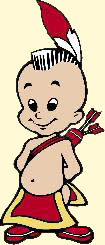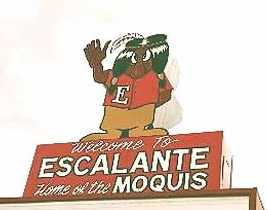The second factor is access to natural resources. These resources can be fish or game, land or water, but the case is the same: no citizens should have "special rights" to use the resources. (It is not mentioned that non-Indians also can retain property use rights over land they sell.) The case is made in anti-treaty pamphlets such as "Are We Giving America Back to the Indians?," "200 Million Custers," and the ironically titled book Don't Blame the Indians: Native Americans and the Mechanized Destruction of Fish and Wildlife by Massachusetts writer Ted Williams.
The third factor is the issue of economic dependency and sovereignty. In a rural reflection of the "Welfare Cadillac" myths used against urban African Americans, all reservation Indians are said to wallow in welfare, food stamps, free housing and medical care, affirmative action programs, and gargantuan federal cash payments--all tax-free, of course. (No one has to pay state sales tax on reservations, but otherwise Indians have had virtually identical tax obligations as non-Indians.) While any quick drive through a reservation will show the Third World conditions Indian peoples have to live under, anti-Indian groups maintain that these conditions arc caused by alcoholism and the breakdown of the Indian family, rather than the reverse. In the same breath, the groups denounce any tribal effort to build some economic self-sufficiency, through appropriate industries, small businesses, tourism campaigns, gaming, or the sale of natural resources. The message is clear and consistent: Indians should be kept under the poverty line, by any means possible.
The fourth factor is the attitude of cultural superiority. Cultural bias comes out in many ways: racist team logos and mascots, the excavation of mounds and burial sites, disrespect of sacred objects such as feathers and drums, and efforts to restrict Native languages and bilingual education. Any Indian objection to these practices more often than not provokes a strong counter-reaction. The very existence of a non-Western belief system, rooted in the middle of the most powerful Western nation, is seen by anti-Indian groups as a fundamental obstacle to overcome.
The fifth factor is simple racism. This includes not only vicious slurs and violent harassment of Indian people, but also the widespread belief that Indians are unfit to govern themselves. Williams describes Indian people as "children," as lazy recipients of outsiders' hand-outs In a right-wing context, this view can easily be translated into a myth that holds Indians as passive components in a conspiracy run by more intelligent non-Indians.



5 comments:
Writerfella here --
Interesting article, until it got down to making mention of "vicious slurs." And what slurs might those be, vicious or otherwise? writerfella heretofore has mentioned some dozen or less epithets that he knew to tell Harlan Ellison, after being delicately queried what the "names for Indians" were, so that Ellison could add them to a litany of slurs a fictional White Supremist had to memorize. Indian, Injun, dirty Injun, savage, blanket-ass, redman, redskin, redstick (??), dog-eater, gut-eater, and that was about all. To which Ellison replied, "But those are...dumb! I mean, I want the words that cut and slash and rip and burn!" All writerfella could do was to shrug, though he did later write an entire science fiction story that told why there are no such words.
Flash back in time a few years earlier when writerfella attended his first Clarion SF Writers Workshop held at Clarion College in Clarion, PA, in 1969. It was six weeks of intensive writing and critiquing by 36 students mingling in with the likes of Theodore Sturgeon, Philip K. Dick, Frank Herbert, Joanna Russ, Ursula K. LeGuin, Fritz Leiber, Robert Silverberg, Harlan Ellison, and many others, in an eastern small-town farm-economy setting. One evening about halfway through the summer session, two young white women wanted to walk down to the local Dairy Queen-type drive-in for ice cream. But almost all the guys were busy or engaged in horseplay, save for writerfella who gallantly volunteered to be their escort. At the drive-in, there were six or eight pickup trucks parked near a fence and a dozen or so young white men laughing and drinking beer by their cars. Immediately that writerfella and the two women walked up, they became the targets of unsmiling attention from those young men. We couldn't help but notice the glares directed at us and so we decided to stay there for only a few minutes. As we left, there was a lot of whispering going on by the pickups but we pretended not to notice. Then, one of them found the courage to shout out, "Hey, Brownie! What ya doin' with our women?" All three of us quickly turned to face them and said in unison, "Brownie???" and we burst out laughing. As we walked on, the pickup dudes suddenly acted as if no one had said anything and that other things by far were more worthy of their attention.
They knew writerfella wasn't white but their racist educations and vocabularies were insufficient to meet the occasion...
Again, what 'vicious slurs'?
All Best
Russ Bates
'writerfella'
I don't know which slurs Grossman meant. You'd have to ask him.
But in recent years, most of the slurs have revolved around Indian gaming. They're more along the lines of Indians being "corrupt" or "greedy" than being "dirty Injuns" or "redskins."
Also note that a slur is "a blot or stain, as upon reputation" as well as "a disparaging remark or a slight." Like a comment, therefore, an image can slur someone's character. Some of the most vicious slurs (e.g., Apocalypto) have been more visual than aural.
If you're curious, you can go through my Stereotype of the Month contest and see what's there. Most of the slurs involve stereotypes, so I've noted many of them over the years.
Writerfella here --
The next questions naturally would become, (emphasis writerfella's) "JUST HOW IS IT THAT SUCH 'SLURS' BECOME PERPETUATED? IS IT THAT THEY ARE PUBLISHED IN THE 'MEDIA' OR ARE THEY REPEATED IN THE ELECTRONIC 'MEDIA' EVERY NIGHT SO THAT THEY CANNOT DIE AWAY OR BE FORGOTTEN?"
And if that does not occur, then it must be that the slurs indicated must be communicated to modern American 'majority' persons other than by such maligned media. And that would mean it happens only by contact with their own families, contemporaries, schools, churches, communities, and cultures. Which is what writerfella all along has stated...
Ooops, sorry, Mr. Gumby!
All Best
Russ Bates
'writerfella'
As usual, you have it exactly backward. The first writings and drawings of Columbus and the colonizers created the so-called slurs. These slurs were perpetuated by paintings, novels, and stage shows and later by photographs, movies and television, and comic books.
Schools were and are a major means of transmitting these slurs; families, churches, and communities weren't and aren't. But in any case, the media came first. Europeans learned Indians were savages before they ever met and discussed them.
To reiterate, the written and illustrated reports triggered the personal discussions, not the other way around. Except for a few intrepid explorers, people initially learned about Indians from the media.
Here's what the experts say on the matter:
No one illustration is enough to create stereotypes in children's minds. But enough books contain these images—and the general culture reinforces them—so that there is a cumulative effect, encouraging false and negative perceptions about Native Americans.
--Council on Interracial Books for Children, "Unlearning Indian Stereotypes"
Second to religion, I think movies have been the most damaging thing to Indians.
--Chris Eyre (Cheyenne/Arapaho), filmmaker, quoted in Indian Country Today, 4/20/02
The media—radio, television, film—is powerful. The messages dominate our thinking, particularly when the viewer has little or no opportunity for firsthand observation. How many Americans see "Indians" anywhere but on the screen? And either way, who is able to distinguish fact from fiction?
--Rennard Strickland, Ph.D, "Coyote Goes Hollywood," Native Peoples, 1/13/97
Post a Comment